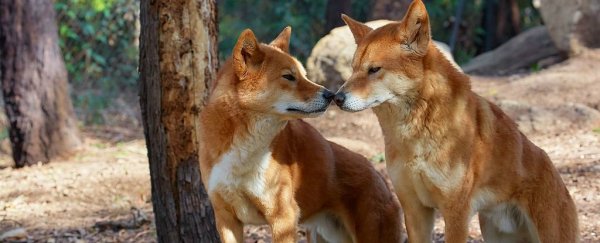We all know that animals need plants to survive, but most of us wouldn't expect the culling of wild dingoes in outback Australia to have an effect on native grass.
But a new study shows that's not the case – removing dingoes has had a surprising effect on grass and other planet life on the Australian outback, and it's created a cascade effect that's led to an over-abundance of woody shrubs.
"Woody shrubs pose a major problem for farmers and their abundance in semi-arid areas has risen dramatically in recent decades," says one of the researchers, Mike Letnic, from the University of New South Wales (UNSW) in Australia.
"These weeds reduce the availability of feed for livestock and hinder access for mustering. But removing them is contentious, because they are classified as native vegetation."
To see if dingoes and other mammals could have anything to do with this, the study compared either side of a so-called dingo fence - a 2-metre tall, 5,600-kilometre-long fence erected to keep wild dingoes out of south-eastern Australia.
On the western side, dingoes are able to roam mostly free in a happy dingo utopia, while on the eastern side, there are very few of them, due to legal culling, baiting and trapping over a number of decades.
The researchers examined aerial photographs from 1948 to 1999 on either sides of the fence, finding that woody shrubs were 26 to 48 percent more prevalent on the side without the dingoes, even if cows were grazing in the area.
"The fence provides a rare, large-scale natural experiment to examine the effects that a top predator such as the dingo has on ecosystems," says one of the team, Christopher Gordon, from Western Sydney University.
"We found that shrub cover had increased on the dingo-free side in both areas, one that had been used for livestock grazing and one that had not been grazed since the 1970s," he adds.
"This suggests overgrazing by livestock may not be the main cause of shrub spread, as had been thought."
Obviously the carnivorous dingoes aren't eating or destroying the shrubs – so what gives?
Well it's a classic case of an apex predator being removed from an ecosystem, and everything (but the shrubs) suffering as a result.
The researchers investigated the numbers of small mammals on each side of the fence, and, with one in particular, the dusky hopping mouse, they found a connection.
"Our results suggest a cascading effect. A loss of dingoes allows foxes and feral cats to thrive and prey on the small mammals that eat the shrub seeds. Fewer small mammals means the shrubs can spread," says Gordon.
"This is the first study to link shrub encroachment to loss of an apex predator like the dingo, and it could explain shrub spread in many other areas around the globe."
While the debate rages in Australia whether moving, or even destroying the fence is a good idea, at least scientists are still discovering new information.
The paper has been published in the Journal of Animal Ecology.
UNSW Science is a sponsor of ScienceAlert. Find out more about their world-leading research.
